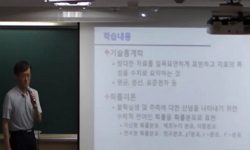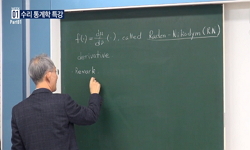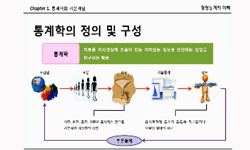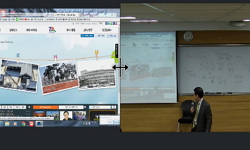『대규모유통업에서의 거래 공정화에 관한 법률』에서는 판매촉진비용의 부당한 전가를 금지하며 그 비용부담에 관한 규정을 두고 있다. 동법 제11조 제3항에 의하면 판매촉진 비용은 소매...
http://chineseinput.net/에서 pinyin(병음)방식으로 중국어를 변환할 수 있습니다.
변환된 중국어를 복사하여 사용하시면 됩니다.
- 中文 을 입력하시려면 zhongwen을 입력하시고 space를누르시면됩니다.
- 北京 을 입력하시려면 beijing을 입력하시고 space를 누르시면 됩니다.

N+1 판매촉진 행사에 대한 공정 비용부담에 대한 소고 = Critical Review on the Fair Share of N+1 Sales Promotional Expenses between a Retailer and its Suppliers
한글로보기https://www.riss.kr/link?id=A106004803
- 저자
- 발행기관
- 학술지명
- 권호사항
-
발행연도
2018
-
작성언어
-
- 주제어
-
등재정보
KCI등재후보
-
자료형태
학술저널
-
수록면
81-109(29쪽)
-
KCI 피인용횟수
1
- 제공처
-
0
상세조회 -
0
다운로드
부가정보
국문 초록 (Abstract)
『대규모유통업에서의 거래 공정화에 관한 법률』에서는 판매촉진비용의 부당한 전가를 금지하며 그 비용부담에 관한 규정을 두고 있다. 동법 제11조 제3항에 의하면 판매촉진 비용은 소매업체와 납품업체가 판매촉진으로 얻게 될 경제적 이익의 비율(예상이익)에 따라 정하되 그 비율은 산정할 수 없는 경우에는 양자의 이익이 동일한 것으로 추정한다. 이 규정은 경영 환경의 급격한 변화에 대응하기 위한 소매업자의 합리적이고 효율적인 경영상 결정을 심각하게 저해할 수 있다. 판매촉진 수단의 다양성 등을 고려하지 않고 모든 유형의 활동에 대하여 일률적인 법을 적용하는 것은 예상치 못한 부정적 결과를 초래할 수 있다. 납품업체가 주도하는 판매촉진 행사에 소매업체가 일부 협조하거나 개입하게 되면 소매업체에게 부당한 부담을 지울 수 있기 때문이다. N+1 판매촉진은 동일한 가격에 더 많은 상품을 제공하는 일종의 수량 판매촉진으로 “한 개를 사면 하나는 덤”이라는 판매촉진 행사가 대표적인 예이다.
N+1 판매촉진은 다음과 같은 이유로 소매업체보다 납품업체에게 훨씬 더 큰 혜택이 돌아간다. 첫째, N+1은 특정 브랜드의 판매를 촉진하므로 납품업체에게 주는 혜택이 매우 명확하다. 반면에 소매업체가 받는 혜택은 다른 보완 제품을 판매하거나 그 행사를 통해 새로이 유치하는 고객의 규모에 따라 달라진다는 점에서 혜택이 명확하지 않다. 둘째, 납품업체는 계절 등 일시적 이유로 판매가 저조한 경우 촉진을 통해 생산 프로세스를 원활하게 하고, 제품 가치의 하락을 방지하며, 신제품 출시의 효율적인 방안으로 활용하며, 다른 판매촉진 수단과 비교할 때 한계 비용이 낮은 방안이고, 가격 할인과 동일한 효과를 창출하면서도 심각한 가격 경쟁을 방지할 수 있는 등 N+1을 통해 다양한 비용 절감기회를 확보할 수 있다. 셋째, 이에 반하여 소매업체는, N+1 판매촉진 행사는 취급해야 하는 제품의 수량을 증가시켜 추가적 공급 체인에 따른 비용과 매장 비용의 발생 및 경쟁제품의 판매기회 상실 등 다양한 추가적 비용을 부담하게 된다. 결론적으로, N+1 판매촉진 행사는 소매업체보다는 납품업체에게 훨씬 더 직접적이고 많은 혜택을 제공한다는 점에서 비록 수익 추정이 불명확한 경우에도 같은 이익을 염두에 둔 1:1의 비용부담은 합당하다고 보기 어렵다. 이 법조항은 판매촉진 비용의 공정한 분배가 소매업체와 납품업체 간의 협상의 주요 쟁점이 되는 경우만 적용될 필요가 있으며 N+1 판매촉진 행사는 그런 판매촉진이 아니라 할 것이다.
다국어 초록 (Multilingual Abstract)
The “Act on Fair Transaction in Large Retail Business” provides the rules concerning the sharing of sales promotional expenses between a retailer and its suppliers. According to the Articles 11 ③, the ratio of sharing sales promotional expenses ...
The “Act on Fair Transaction in Large Retail Business” provides the rules concerning the sharing of sales promotional expenses between a retailer and its suppliers. According to the Articles 11 ③, the ratio of sharing sales promotional expenses shall be determined according to the ratio of economic profits a retailer and its supplier are expected to earn from the sale promotion. although when the expenses can not be clearly estimated, the ratio is presumed to be 1:1. This regulation may seriously impede the reasonable and efficient business decisions of retailers to respond to the dramatic changes in business environments. The author argues considering that the great diversity of sales promotional tools, the indifferent applications of the act to any type of sales promotion may generate unexpected and undesirable consequences. Any involvement of retailers in promotions even initiated and led by its suppliers may put an unjustifiable burden on the retailers. The N+1 sales promotion is a bundling promotion which is a combination of products on sale for the same price and “buy one get one free” promotion is well known example of N+1 sales promotion. The problem arises when the return or benefit from the promotion is not clearly estimated. The N+1 promotion returns much larger benefits to suppliers than retailers because of following reasons. First, the N+1 facilitates the sales of a specific brand whose benefits to a supplier is very clear while to retailer depends on the sales of other complementary products and the size of newly attracted customers. Second, there are a lot of opportunities which allow suppliers to reduce costs by smoothing production process, efficient introduction of products, incur very low marginal costs compared with other sales promotion tools, and prevent serious price war when generating the same effect as price discounts. Third, because the N+1 promotion increases the volume of products a retailer carries, the increase in supply chain expenses, store costs, the loss of future sales at full price, cannibalization among similar products and advertising should be counted in estimating the costs incurred to retailers. In conclusion the unclear estimation of the returns from N+1 promotion can not be a justifiable reason for the presumption of 1:1 ratio regarding the N+1 promotion. The Act should be applied only to the case where the fair share of sale promotional expenses become the focal issue of the negotiation between retailers and their suppliers to arrange the sales promotion and the N+1 promotion is not the case.
참고문헌 (Reference)
1 최영홍, "유통법의 의의와 지도원리" (창간) : 2013
2 김정구, "마케팅 관리" 율곡출판사 2010
3 최영홍, "대규모유통업법의 제정과 운용상 쟁점" 한국경쟁법학회 25 : 3-36, 2012
4 이태식, "경영학의 이해" 박영사 2012
5 Bell, David R, "The Decomposition of Promotional Response: An Empirical Generalization" 18 (18): 504-526, 1999
6 Buzzell, Robert D, "The Costly Bargain of Trade Promotion" 1990
7 Nijs, Vincent, "The Category Demand Effects of Price Prom" 20 (20): 1-22, 2001
8 Kotler, Philip, "Ten Deadly Marketing Sins: Signs and Solutions" Wiley 2004
9 Shankar, Venkatesh, "Strategic Marketing Resource Allocation: Methods and Insights" New Perspectives and Practices 2008
10 Flint, Daniel J, "Shopper Marketing: Profiting from the Place Where Suppliers, Brand manufactures and Retailers" PH Professional Business 2014
1 최영홍, "유통법의 의의와 지도원리" (창간) : 2013
2 김정구, "마케팅 관리" 율곡출판사 2010
3 최영홍, "대규모유통업법의 제정과 운용상 쟁점" 한국경쟁법학회 25 : 3-36, 2012
4 이태식, "경영학의 이해" 박영사 2012
5 Bell, David R, "The Decomposition of Promotional Response: An Empirical Generalization" 18 (18): 504-526, 1999
6 Buzzell, Robert D, "The Costly Bargain of Trade Promotion" 1990
7 Nijs, Vincent, "The Category Demand Effects of Price Prom" 20 (20): 1-22, 2001
8 Kotler, Philip, "Ten Deadly Marketing Sins: Signs and Solutions" Wiley 2004
9 Shankar, Venkatesh, "Strategic Marketing Resource Allocation: Methods and Insights" New Perspectives and Practices 2008
10 Flint, Daniel J, "Shopper Marketing: Profiting from the Place Where Suppliers, Brand manufactures and Retailers" PH Professional Business 2014
11 Ailawadi, Kusum Ailawadi, "Retailer Promotion Profitability: The Role of Promotion, Brand, Category, and Market Characteristics" 43 (43): 518-535, 2006
12 Chintagunta, Pradeep K, "Quantity Decisions of Households" 1993
13 Olver, James M, "Push and Pull: A One-Two Punch for Packaged Goods" 31 (31): 53-61, 1989
14 Gaissmaier, Thomas, "Paying for Performance: Trade Spending for Profitable Growth" BCG 2012
15 Pelton, Lou E, "Marketing Channels" McGraw-Hill 2001
16 Lal, Rajiv, "Manufacturer Trade Deals and Retail Price Promotions" 27 (27): 428-444, 1990
17 Goad, Nick, "How Retailers Can Improve Promotion Effectiveness: A Four-Part Approach to Generating Growth" 28 : 2015
18 Gupta. Sachin, "Household Scanner Data Provide Representative Inferences from Brand Choices: A Comparison with Store Data" 33 : 383-398, 1996
19 Srinivasan, Shuba Srinivasan, "Do Promotions Benefit Manufacturers, Retailers, or Both" 50 (50): 617-629, 2004
20 Ailawadi, Kusum L, "Communication and Promotion Decisions in Retailing:A Review and Directions for Future Research" 85 : 42-55, 2009
21 Alexander, Trey, "Boosting the Bottom Line Through Improved Trade Promotion Effectiveness" Booz & Company 2007
22 Walters, Rockney G, "Assessing the Impact of Retail Price Promotions on Product Substitution, Complementary Purchase, and Interstore Sales Displacement" 55 (55): 17-28, 1991
23 Belch George E, "Advertising and Promotion: An Integrated Marketing Communications Perspective" Irwin Marketing 2017
24 Chiang, Jeongwen, "A Simultaneous Approach to the Whether, “What and How Much to Buy Questions" 10 (10): 297-315, 1991
동일학술지(권/호) 다른 논문
-
대·중소기업간 불균형 해소를 위한 규제현황과 개선방안 - 유통산업분야를 중심으로 -
- 한국유통법학회
- 임정화 ( Lim Jung Hwa )
- 2018
- KCI등재후보
-
- 한국유통법학회
- 최은진 ( Choi Eun Jin )
- 2018
- KCI등재후보
-
- 한국유통법학회
- 한민정 ( Han Min Jung )
- 2018
- KCI등재후보
-
- 한국유통법학회
- 크리스토프부쉬 ( Christoph Busch )
- 2018
- KCI등재후보




 KISS
KISS








